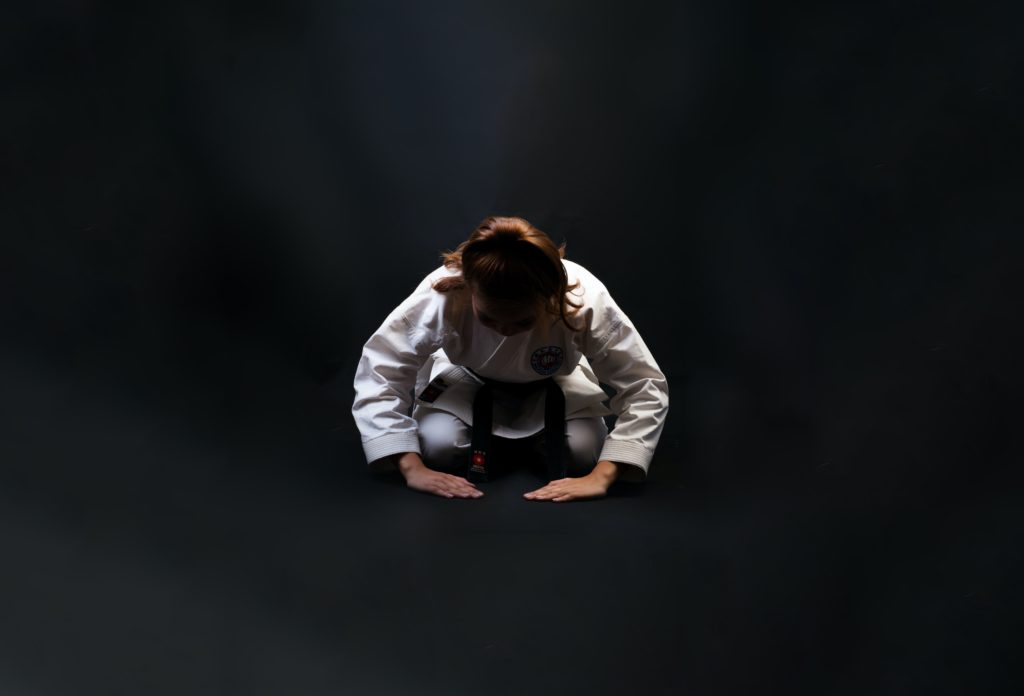One of the biggest determining factors when choosing a martial arts class is the “vibe” of the class. When you walk into a gym or dojo, people will often feel out the class to see if it is a right fit for them. But what are they looking for? While different people may articulate it in many ways, they are often feeling the difference between traditional martial arts and modern martial arts. This article will explain the difference between these, with their respective pros and cons, as well as explain where First Principles Judo stands.
Traditional martial arts and modern martial arts are distinct in many ways. Traditional martial art practice is rooted in ancient traditions and practices from the specific creator and culture where that particular martial art originated. For example, Judo is deeply rooted in Confucian ideals and Samurai training that impacted the Japanese creator, Jigoro Kano. On the other hand, modern martial arts training often favors concepts like self-defense and mixing techniques from several art forms to fit contemporary trends. Both styles of martial art have their place in the modern world, as they appeal to the various unique interests and needs of the community members who train in them.
Traditional Martial Arts
A traditional martial arts class will often appeal to people who like structure in their martial arts practice. Habits like bowing onto the mat, bowing to training partners, folding your Judo gi, or teaching philosophy are hallmarks of a traditional martial art, and are consistently implemented. Instructors will often be very knowledgable in the roots of their practice, and they work to instill those values into students by using repetition and rigid class structure. Students who gravitate towards traditional martial arts will appreciate the discipline and philosophy they learn. However, some students can be averse to the rigidity of traditional teachings. The discipline and customs could feel bulky and out-dated, leaving little room for excitement or spontaneity.
Modern Martial Arts
Modern, or contemporary, martial arts are often much more relaxed, or they can be geared towards current trends. Mixed martial arts has become increasingly popular in Western culture, shooting many martial artists into Hollywood and pop culture fame. Icons like the Gracie family have put Brazilian Jiu-Jitsu on the map in terms of popularity, allowing their family members to branch out into selling gear, cookbooks, and personal gym start up packages. MMA fighters like Ronda Rousey gained far more popularity from her MMA record than from winning the first American female medal in Judo at the 2008 Olympics. Regardless, Rousey and many other MMA fighters have encouraged martial art practice across the country. For students looking for more excitement or familiarity, contemporary martial arts is often a good choice. Some of the pitfalls for these classes could be instability due to changing trends, or a lack of discipline and structure for students.
What is First Principles Judo Teaching?
Here at First Principles, we teach the original Kodokan Judo curriculum from Japan, while also keeping track of the changing competition rules and safety guidelines. The Kodokan curriculum was derived from the original teachings of the founder of Judo, Jigoro Kano. He founded the Kodokan Institute in 1882 for students to not only study Judo techniques, but to study “the way” of Judo. He believed in the inherent value of education, and was heavily influenced by the teaching of Confucius. We try to keep the memory of Kano alive at our dojo by continuously studying Kano’s teachings and passing those onto our students.
When you walk into our dojo (the traditional word for a martial arts gym), you will notice we have an American and a Japanese flag hanging next to a picture of Jigoro Kano to pay tribute to the founder. We also have a small library of Judo books and Kodokan teaching guides for students that are interested in learning off the mat.
While training here, students are required to bow on and off the mat to show respect for the space of Judo practice, as well as other students. Students also bow to their training partners to reinforce one of the core tenants of Judo, which is mutual welfare and respect for all. While we do like to have fun and try not to take ourselves too seriously, we also believe the Judo mat is a place to train your body, mind, and spirit. We would like to think we bring the best out of traditional martial art practice by staying true to the roots, but also reaching our students in the real world.
What Are You Looking For?
As of today, we are the only established Judo studio in the Springfield/Nixa area, but we are certainly far from offering the only martial arts classes in the area. Springfield, MO and the surrounding area have both been blessed by many talented and driven martial artists, so we encourage all of our students to not only try out our class, but look around for other disciplines. The structure, training style, and atmosphere are all important aspects for a student to take into account when finding a martial art that they will want to keep practicing for years to come. If you discover that you are looking for a traditional martial arts class in the Springfield area that values discipline and the principles of respect and trust, then we hope to see you here, on the mat.


Pingback: 5 Benefits of Judo and Martial Arts for Kids - First Principles Judo